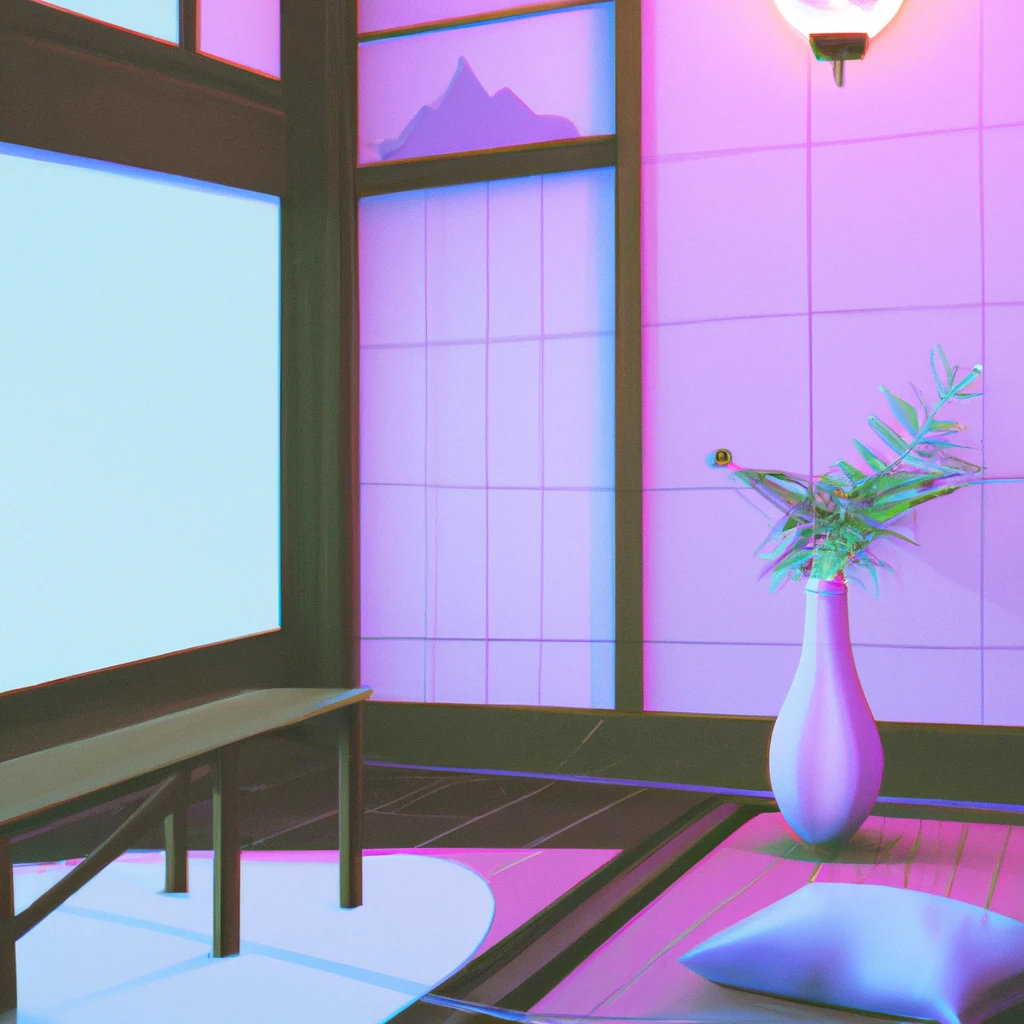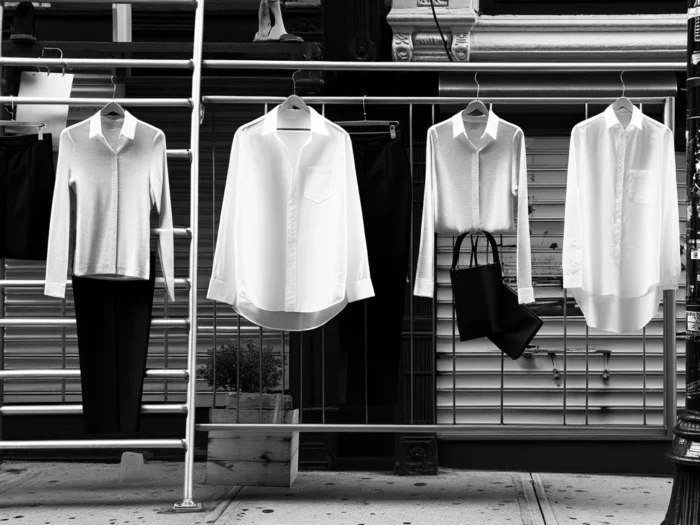Welcome to the land of zen, wa and the art of minimalism, Japan. Have you ever wondered why Japanese homes are epitomes of minimalism and elegance? Why do they radiate a sense of orderliness and tranquility that is seldom found elsewhere? We are about to delve into the fascinating world of Japanese minimalism, a journey that might just transform your perspective on what constitutes meaningful living.
Japanese minimalism: a concept that is more than just an architectural style or an interior decoration trend. It’s an intimate understanding of the transient nature of life and the profound appreciation for the virtues of simplicity and mindfulness.
“In the Japanese culture, there is a belief that the less cluttered the home, the less cluttered the mind. The key isn’t about denying yourself but rather about intentional and thoughtful living.”
What does it mean to lead a minimalist life in the Japanese style? Why does this concept resonate on a global scale? Beyond aesthetics and style, what values and ideas does it hold for us today? As we progress through this guide, I extend an invitation to you, reader, to indulge in these reflective questions with me.
- From the ethereal beauty of a traditional tea ceremony ,
- To the subtle sophistication inherent in a simple Zen garden,
- And the exquisite elegance of Ikebana (the art of flower arrangement),
Together, we will discover how Japanese minimalism is more than pared-down living; it’s about creating a thoughtful balance between space, nature, and our inner selves. So, are you ready to embark on this journey?
- Understanding the Philosophy of Japanese Minimalism
- The Origins of Japanese Minimalism
- Principles of Japanese Minimalism: Less is More
- Applying Japanese Minimalism in Your Home
- Decluttering Your Life the Japanese Minimalism Way
- The Role of Nature in Japanese Minimalism
- Finding Balance and Harmony with Japanese Minimalism
- Japanese Minimalism in Art and Architecture
- The Impact of Japanese Minimalism on Modern Design
The Benefits of Living a Minimalist Lifestyle- Japanese Minimalism and Mindfulness: Cultivating Inner Peace
The Rise of Japanese Minimalism in Popular Culture
Understanding the Philosophy of Japanese Minimalism
Minimalism: a complex philosophy that engages with the simple, the essential, and the meaningful. Ask yourself this: are you trying to make your life more fulfilling by reducing clutter or unnecessary possessions? Are you looking to focus on the aspects of life that truly bring you joy? This is where Japanese minimalism comes into play.
Rooted in Zen Buddhism, the concept of Japanese minimalism revolves around the idea of finding contentment with less. But how does this work? Let’s explore.
The Essence of ‘Ma’
At the core of Japanese minimalism, ‘Ma’ isn’t about the elimination of things, rather it revolves around simplicity and the thoughtful reduction of items. Paring down possessions to the essentials helps to create peaceful, focused environments that help to enrich our lives. In other words, it’s not about having less, but about making room for more: more time, more peace, and more freedom. So, how can you incorporate it into your life?
- Focus on the essentials: Start by identifying what’s really important in your life.
- Prioritize quality over quantity: Consciously choose to own fewer things, but ensure that what you do have is high in quality and purpose.
- Treasure your possessions: Remember, each thing you own carries a cost, not just in terms of money, but also in terms of the time and energy you spend on it.
The Wisdom of ‘Wabi-Sabi’
In addition to ‘Ma’, there’s ‘Wabi-Sabi’, a central concept in Japanese aesthetics that embraces the beauty in imperfection and transience. Does it make you happy? Does it bring tranquility into your life? Then it has a place in your space.
| Principles | Meaning |
|---|---|
| Fukinsei | Irregularity and asymmetry |
| Kanso | Simplicity and austerity |
| Shizen | Naturalness without pretense |
| Yugen | Mysterious depth with aesthetic subtlety |
Doesn’t it sound a lot like a recipe for a more focused life?
Remember: The crux of Japanese minimalism lies in the belief that less is more. Between ‘Ma’ and ‘Wabi-Sabi’, there’s ample room for personal interpretation, and that’s the beauty of it. All it takes is stepping back, evaluating, and then making conscious decisions.
The Origins of Japanese Minimalism
Japanese Minimalism, as the term suggests, originated in Japan. However, it’s not just one single movement that brought us this distinct concept. It’s a blend of influences from several periods and different aspects of Japanese culture. Are you aware of how simplicity and minimalism have always been deeply rooted in the Japanese way of life?
“Simplicity is the ultimate sophistication.” – Leonardo da Vinci
This iconic quote rings true when we cast our attention towards the Japanese approach to lifestyle and aesthetics. So, where did Japanese Minimalism originate from, and what has influenced it through the ages? Let’s dive in:
1. Zen Buddhism
One of the biggest influences on Japanese minimalism is Zen Buddhism. Zen principles emphasize the importance of simplicity, tranquility, and the appreciation of the natural world. This philosophy seeks to reduce distractions, encouraging one to focus on the meaningful aspects of life.
2. Ma (Space)
An integral part of Japanese design, architecture, and music, Ma is a concept that appreciates the value of space. This can be seen in traditional Japanese homes where minimal furniture and clear spaces are prioritized.
3. Wabi-Sabi
The last major influence we’d focus on is the philosophy of Wabi-Sabi. This aesthetic values the beauty in imperfections and transience of life. Wabi-Sabi’s essence revolves around simplicity, modesty, and appreciating the natural cycle of growth and decay.
These three influences combine to create a unique way of life that we call Japanese Minimalism. It’s about stripping away the unnecessary clutter, both physically and mentally, allowing us to focus on what truly matters. This simplified, uncluttered lifestyle promotes calmness, mindfulness, and efficiency.
However, it’s not just about decluttering or owning fewer items. It’s more about intentionality and making conscious decisions about what you include in your life, whether it’s material items, relationships, or activities. So, how’s your journey towards minimalism going?
Principles of Japanese Minimalism: Less is More
When you look at Japanese minimalism, what do you see? Is it just emptiness and starkness, or is there something more? As a financial aficionado turned minimalist enthusiast, I see an opportunity for freedom, simplicity, and peace. So, what exactly is the philosophy behind Japanese minimalism?
Less is More
This philosophy, deeply rooted in Japanese culture, encourages us to appreciate and find beauty in simplicity. By limiting possessions to the essential, we create space in our physical environment and, in turn, in our minds. It’s a philosophy of life that encourages thoughtful, intentional living. It’s about focusing on what matters and eliminating what doesn’t. Think about it: isn’t life already complicated enough without unnecessary clutter?
Minimalism is the intentional promotion of the things we most value and the removal of everything that distracts us from it. – Joshua Becker
Principles of Japanese Minimalism
- Mottainai: This term conveys a sense of regret over waste. Is it wasteful to possess things that serve no purpose or that don’t bring us joy?
- Ma: The concept of ma—roughly translated as “space”—suggests that emptiness is full of potential. How can you unlock your potential if your physical and mental space is filled with clutter?
- Wabi-Sabi: Centered around the acceptance of transience and imperfection, wabi-sabi teaches us to appreciate the beauty in imperfections. Are we not all imperfect in our own way?
Japanese minimalism isn’t about deprivation. It’s about careful selection. Each object in your space should be carefully chosen, serving a purpose or bringing joy—everything else is clutter.
The Benefits of Embracing Minimalism
| Benefit | Description |
|---|---|
| Less Stress | By owning less, we reduce the amount of decisions we need to make, thereby reducing our overall stress levels. |
| More Time and Freedom | The less time and energy we spend on possessions, the more we have for the things that truly matter: relationships, experiences, and personal growth. |
| Financial Stability | By buying less and choosing quality over quantity, we can save money and achieve greater financial stability. |
Now, isn’t it time you considered whether less could actually be more for you?
Applying Japanese Minimalism in Your Home
Isn’t it fascinating, the power that our living spaces have over our minds and hearts? Have you ever considered how much your surroundings can influence your mood, focus, and even your dreams? Let’s delve deeper into making the most of minimalism in your home, Japanese style.
“The space in which we live should be for the person we are becoming now, not for the person we were in the past.” – Marie Kondō, renowned Japanese organizing consultant and author
So, where do we begin? We’ve devised a digestible guide to help you navigate the journey to a calmer, more serene home environment. Let’s explore:
- Commit Yourself: Embracing Japanese minimalism begins with a determined decision. Are you prepared to let go of the superfluous to make space for serenity?
- Begin the Purge: If it doesn’t spark joy or serve a purpose, let it go. Begin with one room at a time, eliminating excess and finding value in what remains.
- Maintain the Spirit: Culture a habit of mindfulness. Appreciate your surroundings and maintain your space, resisting the urge to let clutter creep back in.
The Japanese Minimalist Home: A Snapshot
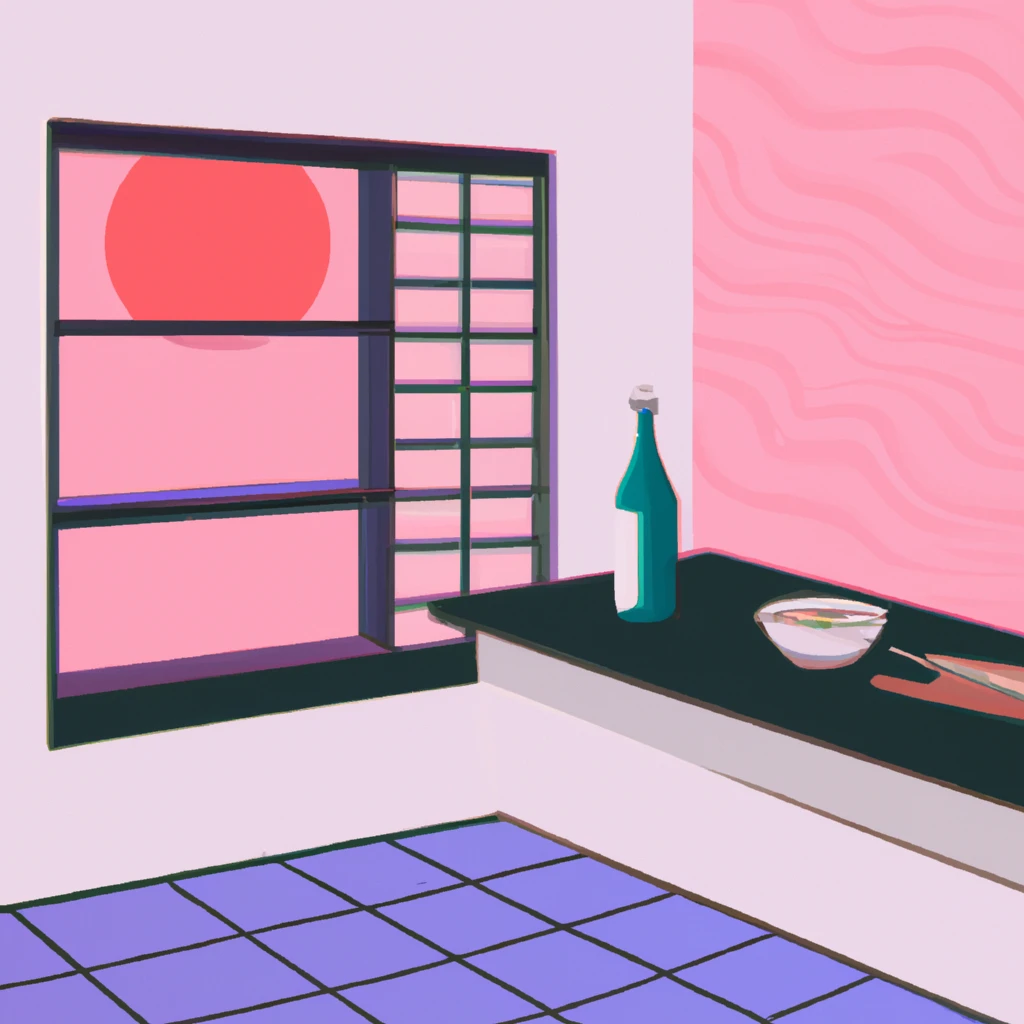
| Room | Principles |
|---|---|
| Living Room | Opt for natural light, a low furniture layout, and neutral tones. Remember, less is more. |
| Kitchen | A clean, functional space is key. Keep utensils and appliances to a bare minimum, storing them away whenever possible. |
| Bedroom | Create a tranquil haven with muted tones, minimal belongings, and a lower bed platform, captivated by the traditional futon style. |
It’s not just a design choice, but an overall attitude – an attitude that honors space, silence, and simplicity. Don’t you feel calm just thinking about it?
Decluttering Your Life the Japanese Minimalism Way
As we journey together through this guide, our first stop unlocks the realm of decluttering. What could be more liberating than freeing up space not just in our physical surroundings, but in our minds as well? Welcome to the world of Japanese minimalism, where decluttering is not just an exercise, but a way of life.
“To really cherish the things that are important to you, you must first discard those that have outlived their purpose.” – Marie Kondo, a renowned Japanese organizing consultant and author.
Are we not all familiar with that drawer filled to the brim with random items, or a closet bursting with clothes we hardly wear? Most times, we hoard these items out of habit or emotional attachment rather than necessity. Japanese minimalism seeks to confront that very propensity.
First Steps Towards Decluttering
- Determine what items truly bring you joy: Adopt the KonMari method by picking up each item and asking yourself “Does this bring me joy?” If not, it’s time to let it go.
- Create a designated space for every item: Having a specific place for each thing not only keeps the rooms clean but also makes it easier to decide what stays and what goes.
Changing Your Perspective

Japanese minimalism isn’t solely about decluttering your physical it space;’s about decluttering your life. The practice encourages us to shift our perspective:
- To buy not because of temporary trends, but only when there is genuine need.
- To value experiences over material possessions.
- To focus on quality rather than quantity.
Imagine the financial freedom you could gain from no longer feeling a slave to consumer culture. Instead of chasing material possessions, could we not channel our resources and energy into constructing memories and experiences?
The Impact on Mindset and Finances
Who knew decluttering your space could come with such profound financial and psychological implications? Let’s dissect this with a simple table:
| Aspect | Impact of Japanese Minimalism |
|---|---|
| Mindset | Encourages contentment and peace by removing unnecessary distractions, fostering mindfulness and reducing stress. |
| Finances | Promotes savings, allows for more conscious buying choices and a shift from materialistic desires to experiential pursuits. |
If we strive towards Japanese minimalism, we invite not just a decluttered space, but a life full of intentionality, peace and financial freedom. Are you ready for the transformative journey of Japanese minimalism?
The Role of Nature in Japanese Minimalism
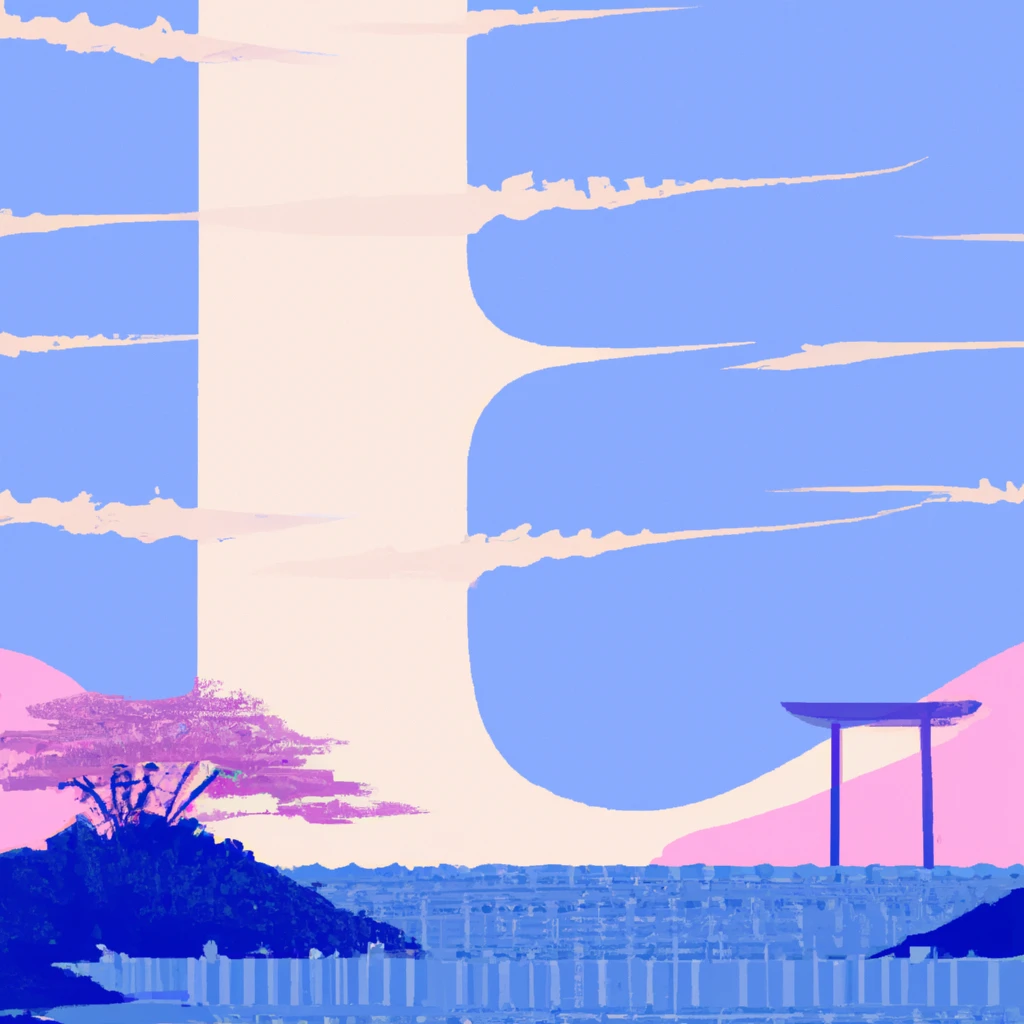
The play of nature in the realm of Japanese minimalism is a concept that isn’t merely suggestive: it’s fundamental. Imagine this: have you ever been inside a Japanese home or a space influenced by the Japanese minimalist aesthetic and felt an overwhelming sense of tranquility? I can tell you from personal experience—this isn’t an accident. It’s a beautifully orchestrated balance of simplicity, functionality, and the integration of natural elements. But why is nature so significant in Japanese minimalism?
Simplicity is the ultimate sophistication. – Leonardo da Vinci
The Essence: Mu
The Japanese concept of ‘Mu’ (meaning nothingness or void) is pivotal in understanding the role of nature in Japanese minimalism. ‘Mu’ favors the presence of emptiness, allowing space for elements like natural light and air to flow freely. It’s like a painting: instead of crowding the canvas with color and forms, you leave ample space, placing each element with attentive care, allowing the empty spaces to communicate their subtle message.
The Influence of Shinto and Zen Buddhism
Japanese aesthetics, including minimalism, owe their reverence for nature to Shinto and Zen Buddhism. In these belief systems, it’s held that gods and spirits inhabit natural elements, from grand mountains to simple rocks. It’s quite humbling, isn’t it? This reverence creates a conscious effort to maintain a natural, harmonious environment, which clearly influences the minimalist style.
- Shinto: The indigenous religion of Japan emphasizes the divine spirit or ‘kami’ present in all things, encouraging reverence for nature.
- Zen Buddhism: Promotes simplicity and clarity of mind, seeking to distill life to its essentials—a mindset clearly manifested in the minimalist aesthetic.
Nature-Inspired Design Elements
Japan’s love for nature filters down to the choice of materials and design elements in minimalistic design. This is apparent in:
- Materials: Natural elements such as wood, bamboo, and natural fabrics like cotton and linen are commonly used.
- Colors: Preference for earthy tones and subtle hues that reflect the colors of nature.
- Decor: Minimalistic decor features plants, stones, or other elements from nature.
So, the next time you find yourself in a minimalist space, take a moment: listen to what the space is saying. Do you see how it carries the whispers of a breeze, the glow of dawn, the silence of a rock? That’s Japanese minimalism holding hands with nature—creating a sanctuary of tranquility.
Finding Balance and Harmony with Japanese Minimalism
Are you looking for a way to create a balance in your life, to declutter not just your physical surroundings but also your mind? If you answered ‘Yes,’ then let me introduce you to Japanese minimalism. It is indeed more than just a design or aesthetic choice; it’s a philosophy that penetrates every aspect of your life. Now, let’s dig deeper into this concept.
The Essence of Japanese Minimalism
Japanese minimalism is not about how little you have, but about how those little things contribute to your peace and harmony. It is about finding value and beauty in simplicity, and balance and tranquility in less.
Whether it’s a tranquil, sparse garden, a minimalist interior, or a streamlined wardrobe, the key to Japanese minimalism is to eliminate the unnecessary, value quality above quantity, and continuously remove distractions that consume our energy and focus. This is done not for the sake of aesthetics, but as a deep-seated spiritual practice of liberating ourselves from excess.
The Principles of Japanese Minimalism
Let’s delve into three key principles at the heart of Japanese minimalism:
- Mottainai: Regret for Waste. This concept encourages us to appreciate and utilize our possessions to the fullest to avoid waste.
- Kanso: Simplicity. This principle expresses the idea that a sense of calm and beauty can be achieved by stripping away all non-essential elements.
- Ma: Negative Space. Ma speaks to the practice of valuing open space as an opportunity for contemplation and tranquility.
I know you might be wondering: ‘How can I apply these principles to achieve balance and harmony in my life?’ You have every right to ask, and that’s exactly what we will discuss.
Implementing Japanese Minimalism in Your Life
Let’s talk about the simplest steps you could take to incorporate Japanese minimalism into your life:
- Declutter: Start by simplifying your surroundings. Get rid of things you don’t need or use regularly. Remember, the goal is to surround yourself with things that add value to your life.
- Purchase Wisely: Cherish what you have and only buy what you need. Seek quality over quantity; it speaks directly to the principle of Mottainai.
- Do One Thing at a Time: In our multitasking world, this could be harder than it sounds. However, it is essential to direct all your focus and energy on one task at a time, allowing for more engagement and less mental clutter.
Implementing these steps according to your pace and comfort is just fine. Remember, the journey towards minimalism is a personal one.
Japanese Minimalism: An epitome of harmony & balance
I hope you see now how Japanese minimalism isn’t merely about decluttering your house. It’s about decluttering your life, focusing on what truly matters, and cherishing each moment. The tranquility and focus we find in this simplicity is deeply rooted in traditions of Zen Buddhism and echoes throughout Japanese culture. Ready to explore this path, to find your own version of balance and harmony?
Japanese Minimalism in Art and Architecture
When we think of Japanese minimalism, our minds often go directly to art and architecture. But why is that? Why does Japan’s creative expression resonate minimalism so deeply with us?
The answer, I believe, lies in two interconnected concepts: Miyabi and Wabi-Sabi.
Miyabi

Miyabi is the concept of elegance and refinement. Its influence in Japanese art and architecture is profound, with an emphasis on simplicity, subtlety, and the meticulous choice of each design element.
Imagine a vast room devoid of clutter. A room where each item plays an integral part in the composition. Where silence is as much part of the decor as the meticulously chosen furniture. That’s Miyabi.
Wabi-Sabi
The concept of Wabi-Sabi speaks to an appreciation for the simple, modest, and imperfect. It champions the rustic, the asymmetrical, and values the beauty of the natural aging process.
Wabi-Sabi is that crack on an antique vase. It’s the rough texture of an unfinished wooden bench. It’s the slight fade of color on an old painting. It doesn’t hide imperfections; it celebrates them.
Together, Miyabi and Wabi-Sabi express an aesthetic that leans towards minimalism. But how are these concepts physically embodied in Japanese art and architecture? Here are a few exemplars:
| Art/Architecture | Description |
|---|---|
| Enso Circle (Zen Buddhism) | A minimalist inked circle that signifies enlightenment and the universe. It embodies Miyabi in its extreme simplicity and Wabi-Sabi in its deliberately imperfect, ‘unfinished’ look. |
| Karesansui Gardens | Rock gardens that depict landscapes through carefully positioned rocks and gravel. The absence of plants is a nod to Miyabi, while the naturally aged rocks express Wabi-Sabi. |
| Machiya Houses | Traditional Japanese townhouses with clean, uncluttered lines. These houses exhibit Miyabi in their modest, simplified exteriors and Wabi-Sabi through their use of natural, aging materials like wood and paper. |
Each example, in its own way, captures the essence of Japanese minimalism. The message is clear: Less is indeed more. But more than that, it’s a mindset—an increased appreciation for subtlety, naturalness, and the beauty that lies in simplicity.
So, are we ready to embrace this perspective in our own lives? What if we could apply these principles to personal finance and lifestyle?
The Impact of Japanese Minimalism on Modern Design
Every inch of space counts in Japan, a country renowned for its dense population and limited land. This reality has spawned a unique design culture embodied in Japanese minimalism. But how exactly has this design philosophy impacted the world? Let’s delve into it.
The Essence of “Ma”
At the core of Japanese minimalism lies the concept of “Ma”, loosely translated into English as “the space between”. There’s an inherent respect for space – both physical and emotional – in Japan.
“It is the silences between the notes that create the music.”
“-An Ancient Japanese Proverb.”
Just as silence is vital in music, open spaces are critical in design. The philosophy treats every element—whether a piece of furniture in a room, a character on a printed page, or even a thought in our minds—with equal consideration. It’s more about the use of space than filling it. Let’s take a look at the practicalities of this philosophy applied to modern design.
The Role of Minimalism in Design
- Architecture: Japanese minimalist architecture beautifully balances “Ma” and functionality. The spaces are often multipurpose, maximizing the use of minimal elements.
- Graphic Design: The simplicity of Japanese minimalism frequently appears in logos, branding, and advertising. The clutter-free designs make it easy for users to engage with brands.
- Fashion: Minimalist Japanese fashion is sought after for its timeless elegance. It often features a limited color palette and simple cuts that portray sophistication.
| Industry | Representative | Contribution |
|---|---|---|
| Architects | Tadao Ando | Buildings that blend with nature while remaining minimal. |
| Graphic Designers | Kenya Hara | Contributed to the distinct minimalist aesthetic of Muji’s branding. |
| Fashion Designers | Rei Kawakubo | Founded Comme des Garçons, a fashion label known for its minimalist pieces. |
In essence, Japanese minimalism isn’t about removing things for the sake of simplicity; it’s about finding the perfect balance. There’s a respect for space and a careful consideration about what to include or exclude. Whether in your life or your designs: are you using your space thoughtfully?
The Benefits of Living a Minimalist Lifestyle
If you’ve ever walked into a Japanese home, you’d have noticed something strikingly different: there’s a stark sense of simplicity, order, and beauty. It’s a world of difference when you compare it to the hustle and bustle of our daily lives, isn’t it? This brings us to the concept of Japanese minimalism. It not only encapsulates the idea of less is more, but it goes beyond that – it emphasizes the value of each item and the impact it has on our environment and lives. So, what’s in it for you? Let’s dive in.
Immediate Clarity of Mind
Ever wondered why you feel refreshed and completely relaxed in a clean, uncluttered room? It’s because minimalism, at its core, is about eliminating distractions. A minimalist lifestyle brings clarity of mind and can significantly reduce stress levels. It clears off unnecessary possessions that cloud our minds, promote relaxation, and improves focus.
Saving Money
Who wouldn’t want to save while also living a fulfilling life? Embracing Japanese minimalism can lead to significant savings. By choosing to buy fewer and higher quality items, you’re making a long-term investment. It’s not about being stingy; it’s about focusing on quality over quantity. Don’t you think you’d rather save for a memorable vacation instead of spending on something you’d forget in a week?
Increasing Productivity
Have you ever thought how a clutter-free space could make a world of difference? With fewer things distracting you, you’re bound to be more productive. Minimalism paves the way for us to strip down to the basics, thus enhancing our efficiency and productivity.
“Japanese minimalism is not about getting rid of things, it’s about making room for what’s truly important.” – Anonymous
Environmental Impact
Living a minimalist lifestyle also has environmental benefits. By reusing, recycling and purchasing less, we reduce waste and consumption of resources. The decreased demand also means less mass production, which is good news for our planet. Isn’t it amazing to see how individual actions can contribute to a larger cause?
More Time
And finally, imagine the time you’d save by not having to clean, organize, and take care of an abundance of things. From my experience, I can confidently say, minimalism frees you from the shackles of material possession and liberates time for what truly matters. It’s a lifestyle that urges you to find beauty in simplicity and foster a deep appreciation for life’s small pleasures. Who knows? Maybe the extra time could allow you to start a hobby you’ve always wanted to try with, connect loved ones, or even kick back and enjoy a moment of tranquility.
The minimalism journey may not be easy, and it’s different for everyone. But I firmly believe that the benefits I shared today will inspire you to give it a shot. And who knows, maybe you’ll find it’s just what you’ve been looking for all along. Remember, the journey to minimalism is not a race, so take your time, and embrace the beauty of less.
Japanese Minimalism and Mindfulness: Cultivating Inner Peace
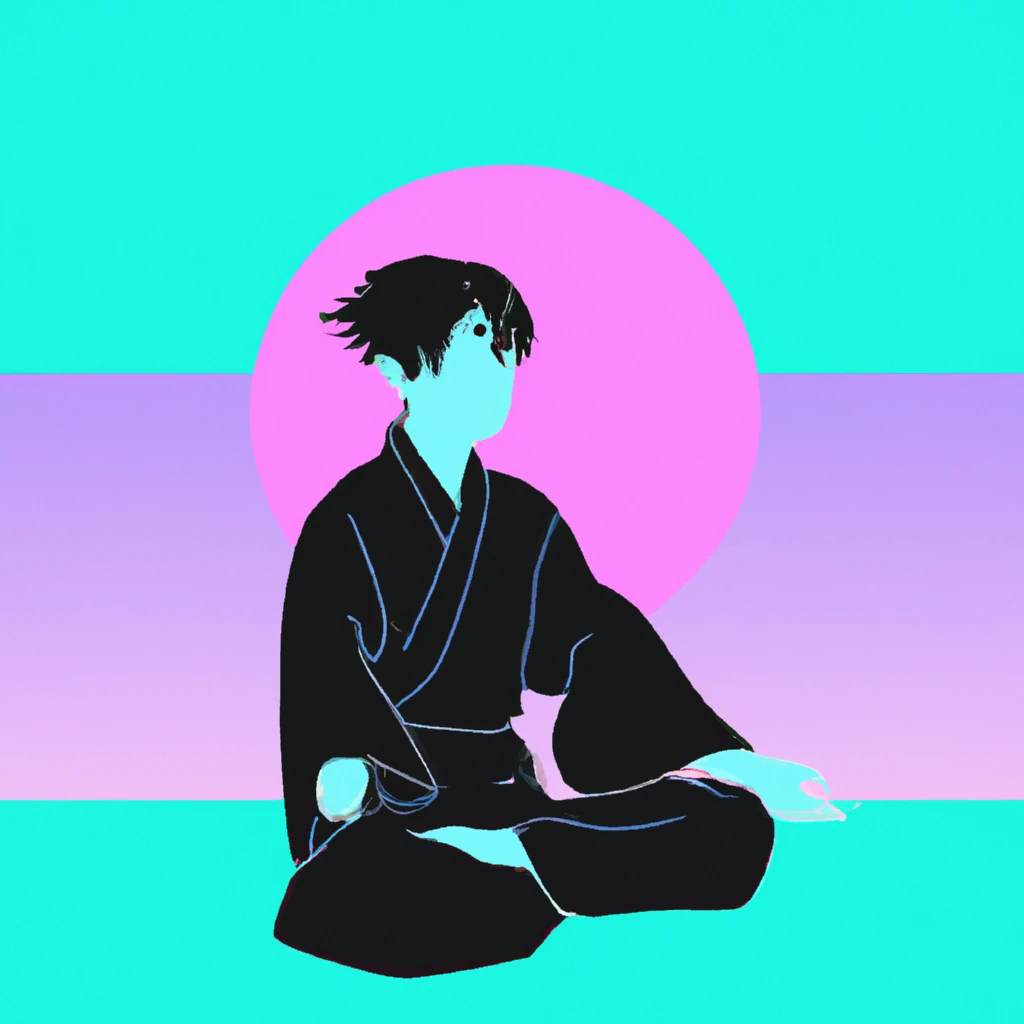
Ah, the magic of Japanese minimalism. I cannot imagine a concept more fitting for this era crowded with complexities and overloaded with options. Ever wondered why Japanese design, fashion, and lifestyle emphasizes simplicity? Or why there’s been a growing global fascination with trends like tidy-up guru Marie Kondo or the minimalist lifestyle?
Japanese minimalism is more than a mere aesthetic. Its philosophy stems from the traditional Japanese concept of “ma” (間), which means “the pure, and indeed the essential, state of an artistic experience”. In essence, it encourages us to dive inward, submerge ourselves into the experience of intentional absence, and surface with clear thoughts and a peaceful mind. Minimalism is less about things and much more about the philosophy behind them. It’s a tool that can assist us in getting rid of life’s physical clutter and appreciating what we love and value.
Key Tenets of Japanese Minimalism
- Simplicity (Kanso – 簡素): Simplifying objects, events, and choices to their most basic forms. It is about avoiding the unnecessary.
- Spareness (Shibumi – 渋味): An understanding that simple experiences can bring great joy and fulfillment.
- Subtleness (Yugen – 幽玄): Subtlety creates an atmosphere that stimulates the deeper parts of our consciousness rather than merely entertaining the mind superficially.
The Intersection of Japanese Minimalism and Mindfulness
So, how does this lifestyle choice pave the way for cultivating inner peace? Let’s answer this with a question: Have you ever noticed how a cluttered workspace can significantly dampen your efficiency and mood?
In the same vein, cluttered surroundings usually translate to a cluttered mind. By limiting our physical possessions and focusing on quality over quantity, we allow our minds room to breathe. Japanese minimalism, in essence, encourages us to live in the present and focus on mindfulness.
“In character, in manner, in style, in all things, the supreme excellence is simplicity. – Henry Wadsworth Longfellow
| JAPANESE MINIMALISM | MINDFULNESS |
|---|---|
| Encourages simplicity | Teaches presence of mind |
| Advocates for quality over quantity | Promotes conscious decision-making |
| Discourages materialism | Promotes appreciation for life’s simple moments |
At the end of the day, adopting a minimalist lifestyle doesn’t mean you have to get rid of everything you own. It’s more of a mindful approach to life, clutter-free living, and cultivating inner peace. After all, isn’t that what we’re all striving for?
The Rise of Japanese Minimalism in Popular Culture
Ah, Japanese minimalism! Where would our modern aesthetics be without it? Trends come and go, yet this unassuming philosophy from the Land of the Rising Sun has gracefully weathered the passage of time, repeatedly catching the world’s wavering eye. But how on earth did this happen? How did the tenets of minimalism, deeply rooted in Japanese tradition, start weaving themselves into the fabric of global popular culture?
The Birthplace of Japanese Minimalism
Now let’s delve a little deeper into the subject: that’s right, we’re turning back the clock. The Japanese tradition of Strip-Down-to-the-Basics (or minimalism, as we know it) is believed to have been shaped by multiple aspects, including the Zen Buddhism philosophy, and the challenging living conditions on the island nation. The influence of Zen Buddhism can be traced right back to its idea of simplicity and living in the moment, a mindset that, when adopted, leads to a clutter-free lifestyle.
“Do not seek to follow in the footsteps of the wise; seek what they sought.” – Mattsu Basho, celebrated Japanese haiku poet.
The wisdom in this quote essentially encapsulates the directive on which Japanese minimalism was built: the quest for profound simplicity.
Japanese Minimalism: A Global Movement?
In a world increasingly characterized by excess, the contrast presented by the minimalist philosophy is nothing short of refreshing. But, how did this home-grown Japanese philosophy gain international recognition?
- Minimalism began to be known outside Japan predominantly through art and design movements.
- A major break-through occurred when Steve Jobs, famously inspired by Japanese minimalism, incorporated its principles into Apple’s product design.
- Another catalyst was Marie Kondo’s “The Life-Changing Magic of Tidying Up”, which took the world by storm, nudging people to question the need for excess.
| Year | Major Milestone |
|---|---|
| Mid 20th Century | Minimalism permeates art and design |
| Early 2000s | Jobs launches the minimalist iPod |
| 2014 | Kondo’s book oozes into popular consciousness |
These watershed moments not only embedded the concept of Japanese minimalism in the global psyche but also ensured its enduring popularity. So, whether it’s our digital devices or our living spaces, the influence of Japanese minimalism is everywhere, prompting us to redefine what’s truly necessary and what’s merely clutter.
